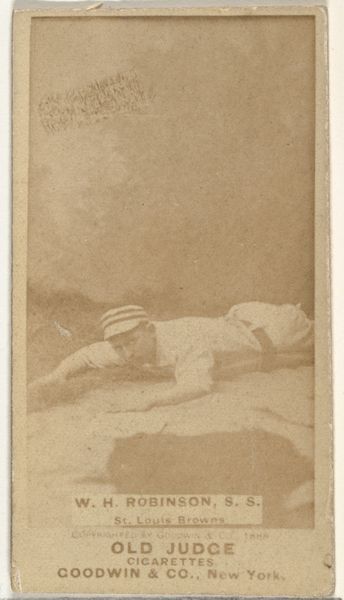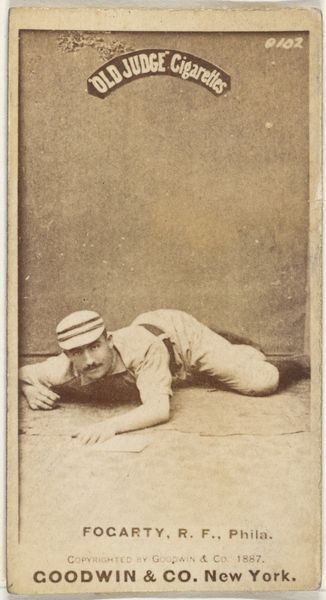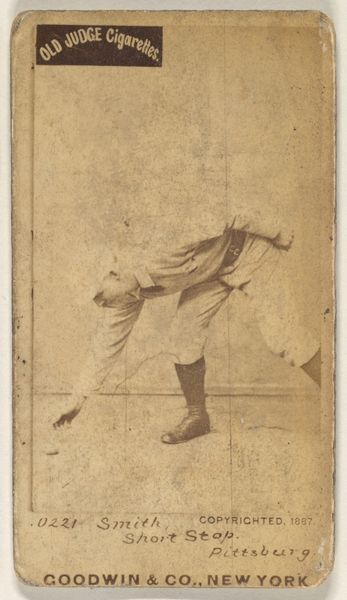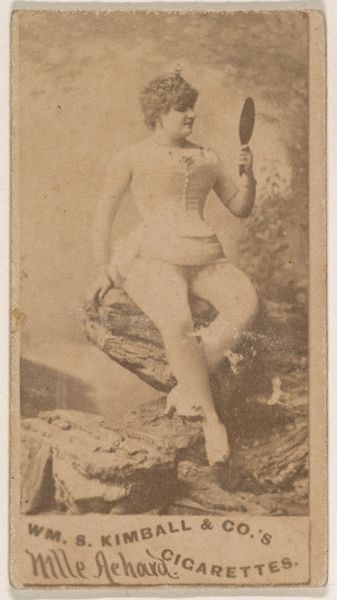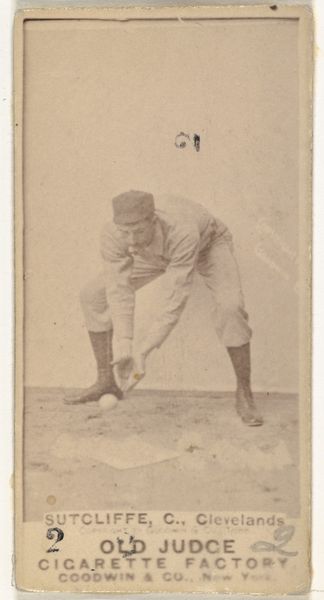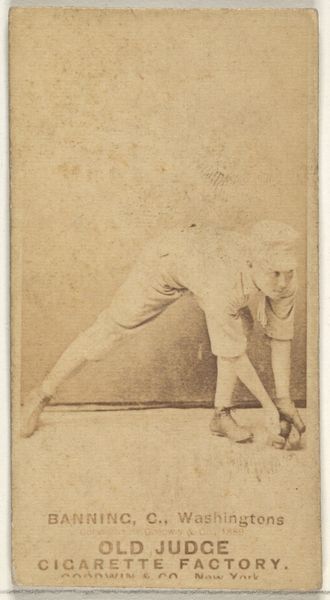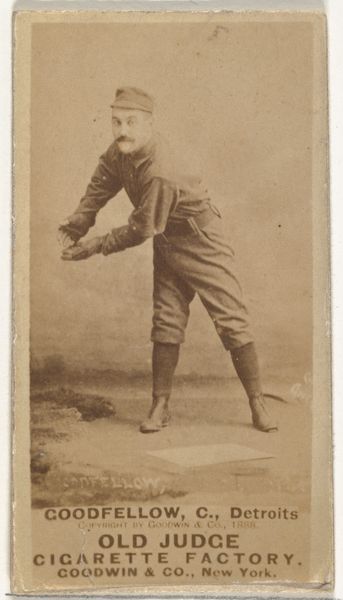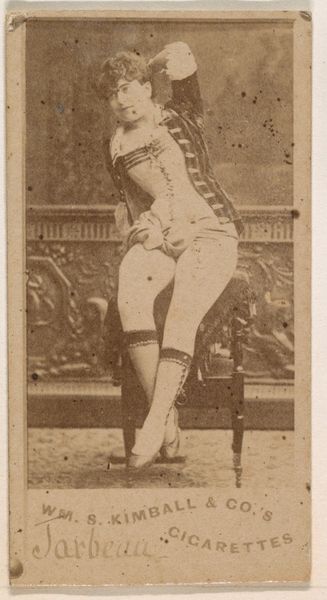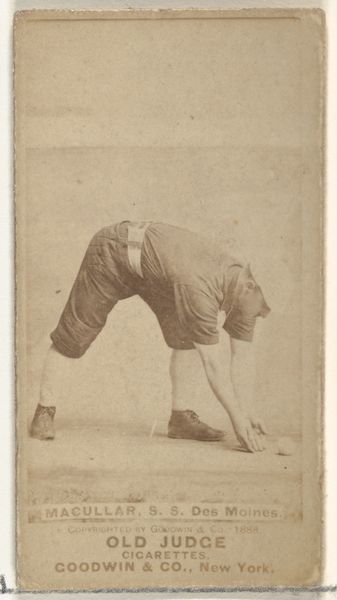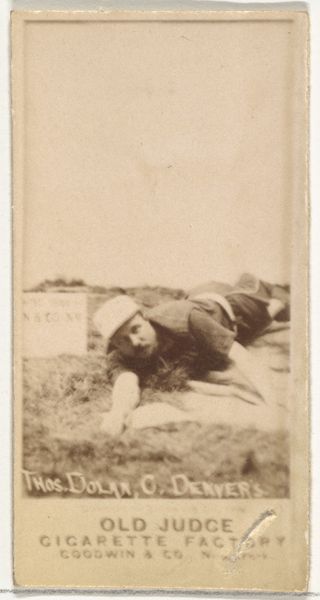
Arlie Latham, 3rd Base, St. Louis Browns, from the Old Judge series (N172) for Old Judge Cigarettes 1888
0:00
0:00
print, photography
#
portrait
# print
#
baseball
#
charcoal drawing
#
photography
#
men
#
athlete
Dimensions: sheet: 2 11/16 x 1 3/8 in. (6.9 x 3.5 cm)
Copyright: Public Domain
Curator: What we're looking at here is an 1888 photographic print, part of the "Old Judge" series created by Goodwin & Company. This particular one features Arlie Latham, the third baseman for the St. Louis Browns. Editor: Immediately, I'm struck by the composition. The monochrome palette is muted, yet it accentuates the dynamic pose of the player, giving it a sense of arrested motion. His outstretched form dominates the limited picture plane. Curator: It's a compelling image when we consider its original context. These cards were inserted into cigarette packs as collectibles. Think about the cultural message it sends: baseball, a rising American pastime, used to promote tobacco. There's a fascinating tie to notions of masculinity and consumption. Editor: Indeed, but also consider the formal elegance. The shallow depth of field throws the background into a soft focus, directing all attention to Latham. And that curve created by his sliding body... it's almost sculptural. The stark light defines his athletic form perfectly. Curator: Absolutely, and Latham himself was quite the character. Known as the "Freshest Man on Earth," he was famous for his on-field antics, a stark contrast to the stoicism expected of athletes at the time. The card becomes an intriguing record of a particular, playful expression of masculinity within this sport. Editor: One could argue the photo’s strength is actually this subtle contrast: the grit of the game juxtaposed with a rather refined photographic style. The lighting and composition, they elevate what would otherwise be a straightforward portrait into a study of form and athletic prowess. Curator: Considering baseball's complicated relationship with labor and social class at the time, especially with the rise of industrial capitalism, these cards provided a sort of aspirational fantasy to many working-class individuals. Collecting these photos became a democratic ritual of sorts, allowing individuals to access celebrity, create conversation, and display allegiances in ways previously unimaginable. Editor: It's an intriguing intersection, where commercial promotion meets nascent sporting culture, all framed within a careful arrangement of tonal values and shapes. It truly displays that beyond content, the visual language of art holds great potential to define meaning. Curator: Exactly. Viewing art within that historical and social nexus provides greater opportunity for the audience to understand how identity, popular culture, and nascent media can interplay in powerful and very telling ways. Editor: I couldn't agree more; I'm simply emphasizing that close observation reveals additional layers, allowing for a broader, yet formally grounded appreciation of what it depicts.
Comments
No comments
Be the first to comment and join the conversation on the ultimate creative platform.
